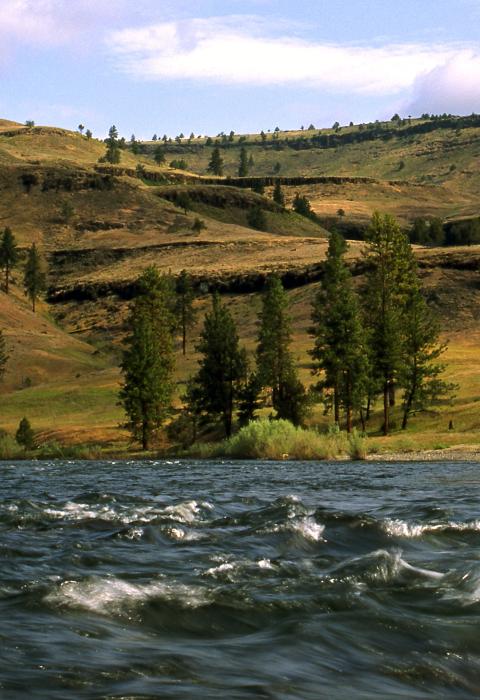North Fork John Day River
Oregon
The North Fork of the John Day River, located in northeast Oregon on both the Umatilla and Wallowa-Whitman National Forests, originates in the North Fork John Day Wilderness and flows north and then west to its confluence with Camas Creek. The river’s diverse landscape and geologic formations create high-quality natural scenery. Manmade developments have a primitive or historic appearance, including early day mining remains.
Designated Reach
October 28, 1988. From its headwaters in the North Fork of the John Day Wilderness Area to its confluence with Camas Creek.
Outstandingly Remarkable Values
Fish
The North Fork supports the largest remaining wild run of chinook salmon and steelhead trout in the Columbia River Basin; the value of the only remaining genetically viable wild run of spring chinook salmon in the entire basin is incalculable. Wild populations of bull trout and redband/rainbow trout are also extremely valuable as genetic conservation pools of their species.
History
There is a great deal of history from the gold mining era in this area. Settlement of this part of the Elkhorn and Blue Mountains and surrounding valleys is tied to the gold mining activity which occurred in the North Fork of the John Day River corridor. It was the early settlers’ pursuit of this ore which makes the area so rich in history.
Recreation
The quality and diversity of recreational opportunities available along the North Fork John Day River corridor makes it a popular area year-round for local visitors and those from outside the area. Recreation opportunities range from hiking and horseback riding to rafting/kayaking and gold panning.
Scenery
Like other river drainages in the Elkhorn and Blue Mountains, the North Fork John Day River corridor possesses diversity in vegetation and topographic landform. Significant sections of the river had already been recognized through the 1984 wilderness designation. The paved road which parallels part of the river was administratively designated a National Scenic Byway.
Wildlife
The importance of the habitat and its resulting wildlife species is exceptional. The expanse of designated wilderness provides significant high-quality habitat for species which require a large area for their survival. Wildlife found along the river’s corridor includes Rocky Mountain elk, mule deer, and black bear, along with bald and golden eagles, osprey, and northern goshawk.

